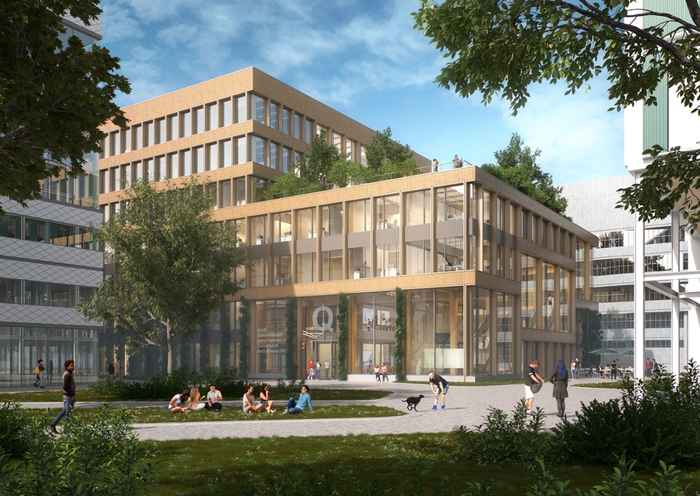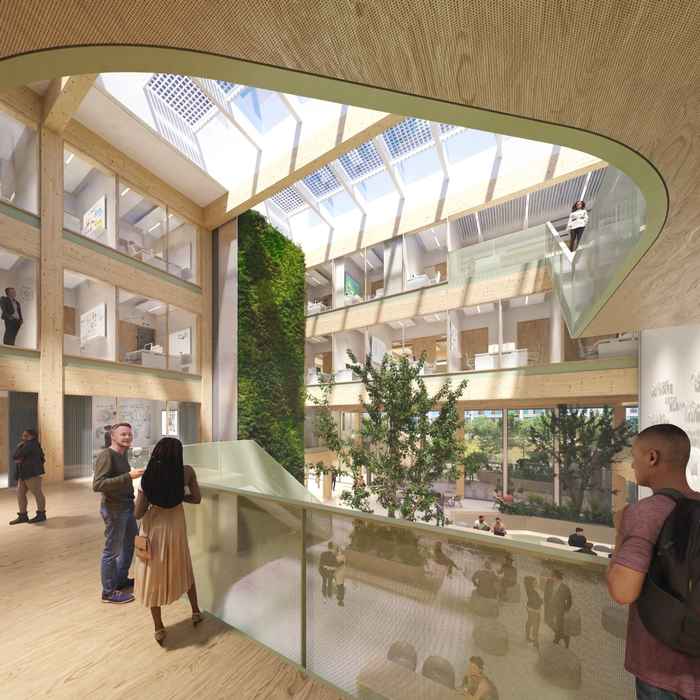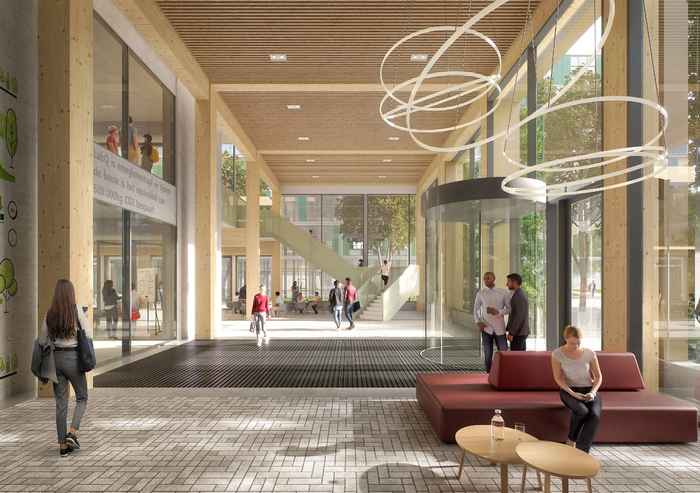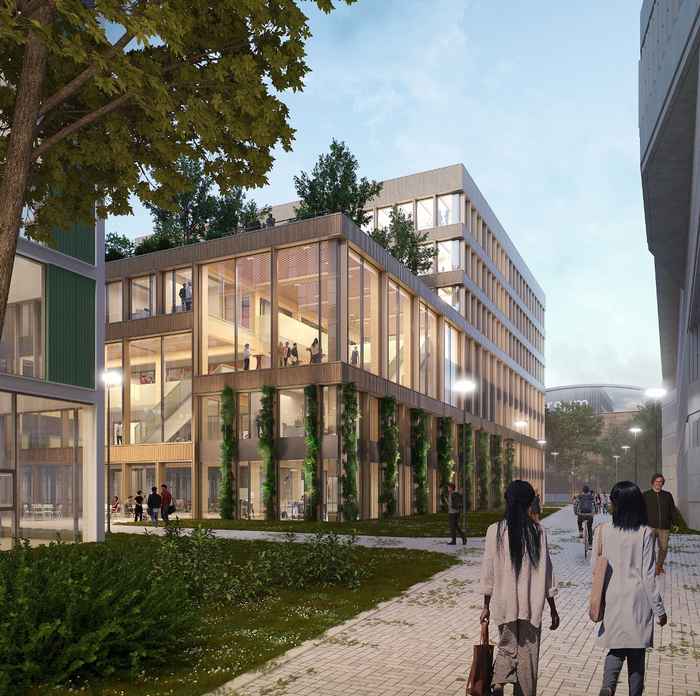UvA selects design by architecture firm cepezed for new construction LabQ
LabQ: the central hub in Amsterdam for quantum education, research, and valorization
18 September 2023
LABQ will not only be the home of UvA's successful research center QuSoft and for Centrum Wiskunde & Informatica but will also house advanced laser setups to achieve breakthroughs in quantum research. The focus will also include the development of quantum applications and quantum sensing. The building will provide space for co-creation and field labs, allowing UvA researchers to collaborate closely with each other and external partners. This will bridge the gap between fundamental quantum research and its practical applications, making UvA's LabQ an important link in the national quantum ecosystem of Quantum Delta NL.
Atrium and Tribune Garden
Cepezed, along with its partners Deerns, Tielemans, and 4 Building, designed a state-of-the-art multifunctional LabQ. The building will have a light wooden structure with functions such as offices, small classrooms, and facility spaces (of facility rooms), an entrance zone with elevators, all surrounding a sturdy concrete core that will house laboratories and lecture rooms.
In total, the building will have seven floors. On the third floor, two notable features in the design include a compact atrium with offices around it and an ascending rooftop garden known as the 'tribune garden.' The design of the tribune staircase is inspired by the flowing forms of quantum equipment. The rooftop garden with the tribune is partially sheltered from the wind and can potentially offer study and/or workspace.
'Paris proof'
Sustainability is a top priority for LabQ. The building will be developed in accordance with the Paris Proof all-electric standard, a construction and design standard aimed at reducing CO2 emissions. By utilizing thermal storage (WKO) technology and renewable energy sources, UvA aims for LABQ to be an energy-neutral building with a low environmental impact. The use of the whole-life carbon approach aims to keep CO2 emissions low over the entire lifespan of the building.
Another important sustainability goal is to create a degree of flexibility for the future. The building should be able to accommodate new developments and different user groups at a later stage without requiring excessive resources and energy at present.



